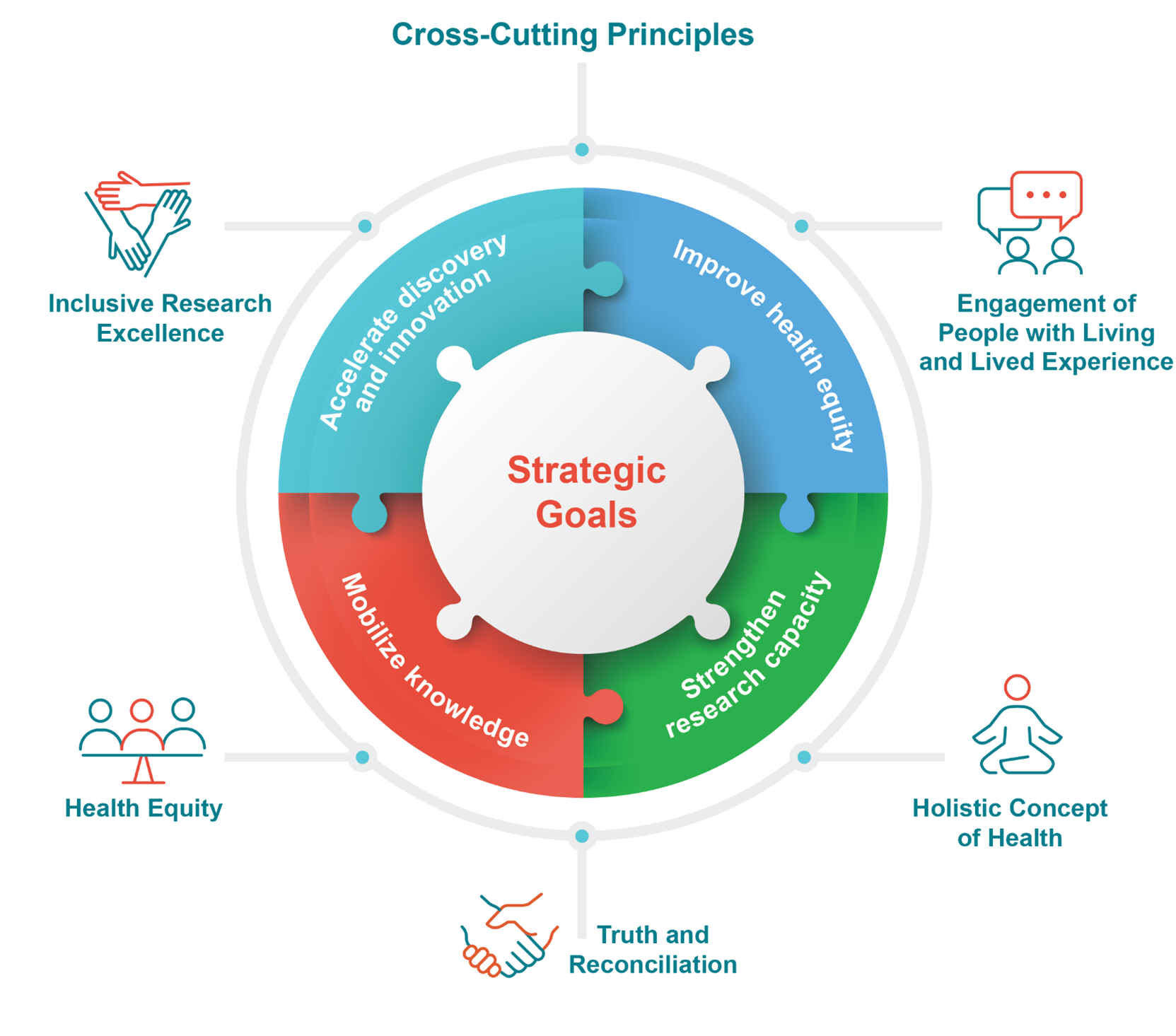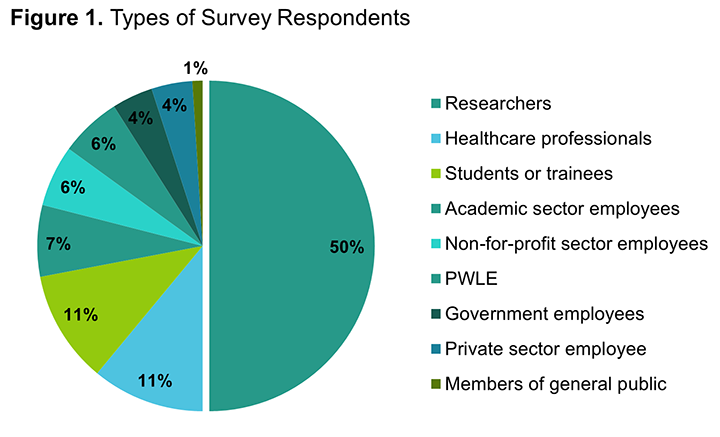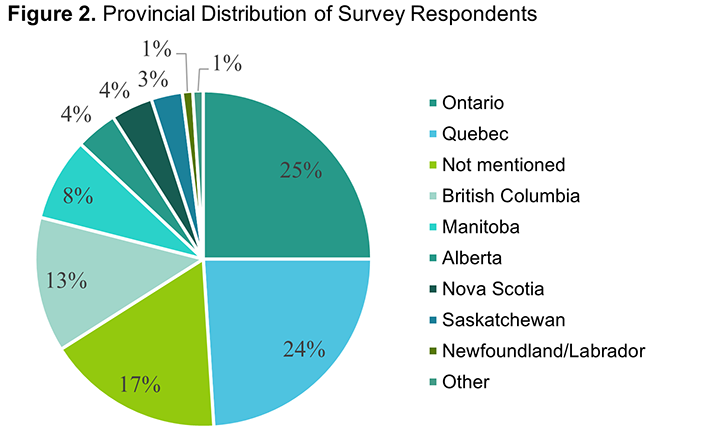CIHR HIV/AIDS and STBBI Research Initiative
Strategic Plan 2022–2027
Table of Contents
- Message from the Scientific Director
- Strategy at a Glance
- Background: The CIHR HIV/AIDS and STBBI Research Initiative
- Context: HIV/AIDS and STBBI in Canada
- Building on Strengths for Future Impact
- Vision, Mission and Cross-Cutting Principles
- Strategic Goals and Priorities
- Our Broader Impact in Canada and Beyond
- References
- Acknowledgments
- Appendix A: Overview of the Strategic Plan Development Process
Message from the Scientific Director
Dear Colleagues,
Over the past four decades, we have witnessed HIV-1 infection change from an untreatable death sentence to a manageable chronic disease. Despite this remarkable progress, much work remains to be done. The rates of new infections have plateaued globally, rates in regions such as Sub-Saharan Africa remain unacceptably high, and key populations continue to be disproportionately impacted due to inequities driven by systemic and social determinants of health. While the HIV-1 pandemic has been a focus worldwide, the same cannot be said about other sexually transmitted and blood-borne infections (STBBI). Globally and in Canada, rates of chlamydia, gonorrhea, syphilis and other STBBI are increasing, with some becoming increasingly resistant to treatments. These infections also target the same key populations and vulnerable communities as HIV-1.
The CIHR HIV/AIDS and STBBI Research Initiative will continue to lead the Government of Canada's research response to HIV/AIDS and STBBI by supporting excellent research across the cascade of care: from prevention and testing to treatment and ongoing care. Our investments within this space over the last twenty years have helped propel the Canadian research community to the forefront and position Canada as a world-leader in HIV/AIDS research. Now, we must continue to build on our past strengths of community- and people-centered approaches and foster an inclusive, diverse, and collaborative research community committed to developing and delivering evidence-based HIV/AIDS and STBBI interventions, policies and practices tailored to the needs of those most impacted.
The COVID-19 pandemic has added additional challenges to the ongoing fight against HIV/AIDS and STBBI, as disruptions to critical health services have deterred our progress towards reaching global targets that aim to end the AIDS and viral hepatitis epidemics, and hampered efforts to reduce the health impacts of STIs by 2030. The pandemic has also amplified the importance of addressing the inequities that affect the most vulnerable members of our society and directly impact their health and wellbeing. We are at a critical point in time where our collective actions will have significant impacts on getting back on track for meeting targets to eliminate these infections.
I am excited to present the CIHR HIV/AIDS and STBBI Research Initiative Strategic Plan 2022–2027, an ambitious strategy to help guide our way forward. Consistent with the CIHR Strategic Plan 2021–2031 and the Pan-Canadian STBBI Framework for Action, this plan aspires to achieve excellence in research that has a transformative impact on the lives of all people living with and at risk of acquiring HIV/AIDS and STBBI and leads to equitable health outcomes. It prioritizes research that not only boosts innovation across the continuum of care, but also addresses the underlying factors that create conditions of vulnerability. It re-affirms commitments to build research capacity, with a focus on historically underrepresented and Indigenous researchers. Finally, it emphasizes research which has impact by enabling community-based, holistic, and inter- and transdisciplinary approaches to achieve the best health for all.
I would like to express immense gratitude to the 300+ national and international stakeholders who shared their time and valuable input to help shape this plan, our CIHR HIV/AIDS and STBBI Research Advisory Committee for guiding us throughout the development process, and CIHR and III staff for their dedication and leadership. Even though our research community is very diverse and covers multiple disciplines, I hope this plan resonates with all of you. I invite you to work with us in our shared goal to eliminate HIV/AIDS and STBBI in Canada and beyond.


Charu Kaushic, PhD
Scientific Director, Institute of Infection and Immunity
Strategy at a Glance
The Canadian Institutes of Health Research (CIHR) HIV/AIDS and Sexually Transmitted and Blood-Borne Infections (STBBI) Research Initiative (Research Initiative) has the mandate to identify and administer research support for Canadian-led research priorities with the potential to alleviate the burden of HIV/AIDS and STBBI in Canada and globally. To this end, the Research Initiative has focused on enabling discovery research, fostering strengths in community-based and Indigenous-led research, mobilizing and applying research evidence and strengthening research capacity with an emphasis on engaging people with living and lived experiences (PWLE) across all four pillars of health research: biomedical, clinical, health systems services and population health research.
Aligned with the CIHR Strategic Plan 2021–2031 and with the Government of Canada five-year action plan on STBBI, the CIHR HIV/AIDS and STBBI Research Initiative Strategic Plan 2022–2027 aspires to achieve excellence in research that decreases the incidence and improves the management of HIV/AIDS and STBBI. It also helps to eliminate stigma and discrimination, upholds a commitment to Reconciliation through a focus on Indigenous health and Indigenous-led research, and improves the lives of all people living with and at risk of HIV/AIDS and STBBI. CIHR is therefore committed to prioritizing research that builds a better understanding of the social, cultural, environmental, systemic and biological factors—many of which intersect—that contribute to the incidence of HIV/AIDS and STBBI. We will prioritize research that enables the creation and application of knowledge to accelerate innovative interventions that achieve more equitable health outcomes for all, across the cascade of HIV/AIDS and STBBI care. We envision a diverse, inclusive, and collaborative research community in which researchers from all backgrounds can thrive at every stage of their career. Finally, together with our research community and through greater and more meaningful engagement of PWLE, decision makers, health practitioners, community and industry, we will work collaboratively to support knowledge mobilization that aims to optimize the relevance and adoption of HIV/AIDS and STBBI research into interventions, policies and practices.
Through these commitments, we will help achieve the best health for all by working together toward more equitable health outcomes among those most impacted by HIV/AIDS and STBBI.

Long Description
Strategic Goals:
- Improve Health Equity
- Accelerate Discovery and Innovation
- Strengthen Research Capacity
- Mobilize knowledge
The following cross-cutting principles will be applied to drive the Strategic Goals
- Inclusive Research Excellence
- Engagement of People with Living and Lived Experience
- Health Equity
- Holistic Concept of Health
- Truth and Reconciliation
Background: The CIHR HIV/AIDS and STBBI Research Initiative
Box 1. What's in a name?
When first launched in 2005, the Research Initiative was called the HIV/AIDS Research Initiative. As of 2018, and consistent with the Pan-Canadian STBBI Framework for ActionFootnote 10 and the Government of Canada five-year action plan on STBBIFootnote 11, the Research Initiative has expanded its scope to focus more broadly on HIV/AIDS and other STBBI. This evolution reflects the fact that many STBBI are syndemic and share common risk factors, behaviours for transmission, routes of transmission and social determinants of vulnerability. While infection-specific approaches are still appropriate in certain circumstances or communities, an integrated approach to HIV/AIDS and STBBI can enable greater coordination of prevention, intervention and care, and optimize resource utilization.
STBBI describes infections that are transmitted primarily through exchange of body fluids during sexual contact and/or through blood. This includes, but is not limited to:
- HIV/AIDS
- Hepatitis B (HBV) and C (HCV)
- Chlamydia
- Gonorrhea
- Syphilis
- Human papilloma virus (HPV)
As the global burden of HIV/AIDS and STBBI persists, there is a need for sustained investment in research.
In 2020, there were approximately 37.7 million people living with HIV/AIDS around the world, with close to 16% unaware of their HIV-positive status, an estimated 1.5 million new infections and approximately 680,000 deathsFootnote 1. While this marks a 30% decline in new HIV/AIDS infections since 2010, progress has been slowing and the UNAIDS 90-90-90 targets have not yet been met (they are now replaced by new targets—95-95-95—to be achieved by 2030). More recently, HIV/AIDS testing and treatment programs are experiencing severe disruptions as a result of the COVID-19 pandemicFootnote 2Footnote 3Footnote 4Footnote 5. Beyond HIV/AIDS, other STBBI are also a major public health concern worldwide. An estimated 376 million new infections of four curable STBBI―chlamydia, gonorrhea, syphilis and trichomoniasis—occur every yearFootnote 6. In Canada and globally, rates of certain STBBI continue to growFootnote 7Footnote 8. For instance, the rates of infectious syphilis have more than tripled in the past decade and gonorrhea rates have almost doubled in the past five yearsFootnote 9.
Globally and in Canada, the patterns of HIV/AIDS and STBBI incidences show a striking and disproportionate concentration in key populations. This disparity is driven by the many, often intersecting, biomedical, behavioural, social and systemic factors that create conditions of greater susceptibility. Accelerating progress toward global targets for HIV/AIDS and STBBI in this context will require a targeted, population-based research approach focused on integrating an understanding of the many upstream factors that drive health inequities across the cascade of care and expanding the toolbox of interventions to meet the specific needs of the key populations most affected by HIV/AIDS and STBBI.
The Research Initiative is propelling Canada's HIV/AIDS and STBBI research response.
Canada's research response to HIV/AIDS and STBBI is propelled by the CIHR HIV/AIDS and STBBI Research Initiative (see Box 1). Guided by the scientific leadership from the CIHR Institute of Infection and Immunity, the mandate of the Research Initiative is to identify priorities for Canadian-led HIV/AIDS and STBBI research and to administer research supportFootnote 12. With a budget of approximately $21 million per year, the Research Initiative supports researchers and trainees through research funding streams which include: biomedical and clinical research; health services and population health research; community-based research; and the CIHR Canadian HIV Trials Network (CTN).
Having endorsed global targets to address HIV/AIDS, viral hepatitis and sexually transmitted infections and with a view to reducing the health impacts of STBBI in Canada, the Government of Canada worked with partners to establish the Pan-Canadian STBBI Framework for Action in 2018Footnote 10. Subsequently, in 2019, the Government of Canada released its five-year action plan on STBBI which specifies priorities for Federal Government departments under the Framework to accelerate prevention, diagnosis and treatment of STBBIFootnote 11. CIHR has a mandate, through the Research Initiative, to deliver on the following research commitments outlined in the Action Plan:
Box 2. Key mandates:
CIHRFootnote 14: To excel, according to internationally accepted standards of scientific excellence, in the creation of new knowledge and its translation into improved health for Canadians, more effective health services and products and a strengthened Canadian health care system.
Pan-Canadian STBBI Framework for ActionFootnote 10: Sets out an overarching and comprehensive approach that will support and contribute to achieving global STBBI targets.
Government of Canada five-year action plan on STBBIFootnote 11: Accelerate prevention, diagnosis and treatment to reduce the health impacts of STBBI in Canada by 2030.
Research InitiativeFootnote 15: To lead the Government of Canada's research response to HIV/AIDS and STBBI by supporting excellent research across the cascade of care: from prevention and testing to treatment and ongoing care.
- Developing the Government of Canada's HIV/AIDS and STBBI research plan and coordinating its investments.
- Investing in knowledge creation to understand how the social determinants of health affect and are affected by HIV/AIDS and other STBBI.
- Investing in vaccine, microbicide and innovative biomedical prevention technologies research to expand the prevention toolkit and contribute to global HIV/AIDS, HCV and STBBI prevention efforts.
- Investing in research on emerging and innovative testing technologies and approaches that can facilitate access to testing and linkage to care for key populations, including underrepresented groups, such as official language minority communities, First Nations, Inuit and Métis communities, persons with disabilities, and geographically isolated populations.
The Research Initiative's 2022–2027 Strategic Plan will guide and reinforce Canada's commitment to reducing the health impacts of HIV/AIDS and STBBI.
Now that the Strategic Plan 2015–2020 has come to a close and given the integration of an expanded focus on STBBI, a new five-year (2022–2027) Strategic Plan has been developed to inform HIV/AIDS and STBBI research priorities for Canada. This Plan will contribute to the vision of the CIHR Strategic Plan 2021–2031Footnote 13, continue to reinforce alignment with the Pan-Canadian STBBI Framework for ActionFootnote 10 and the Government of Canada five-year action plan on STBBIFootnote 11and accelerate cohesive and integrated actions to reduce the health impacts of HIV/AIDS and STBBI in Canada and beyond, through excellence in research and innovation.
Context: HIV/AIDS and STBBI in Canada
Canada has committed nationally to reducing and, for some targets, eliminating STBBI by 2030 and has endorsed international targets including the 2030 UN Sustainable Development Goals, the UNAIDS 95-95-95 and the World Health Organization's global health sector strategies to address HIV, viral hepatitis, and STBBIFootnote 4Footnote 16Footnote 17. While overall global rates of HIV/AIDS have declined slowly, in Canada the rate of HIV/AIDS cases reported annually has remained relatively stable over the last decade, reminding us that there is more work to doFootnote 18. In 2019, Canada's prevalence rates were 5.6 cases per 100,000 population; at the end of 2018stimates indicated that approximately 62,050 people were living with HIV/AIDS in CanadaFootnote 18.
Unlike HIV/AIDS, rates of other STBBI in Canada—many of which are curable or manageable with treatment—have been increasing. Indeed, gonorrhea, chlamydia and syphilis have emerged as increasingly important public health concernsFootnote 9. In 2018, a total of 117,008 cases of chlamydia, 30,874 cases of gonorrhea and 6,281 cases of infectious syphilis were reported, which corresponds to annual incidence of 363.2, 95.8 and 16.9 per 100,000 population, respectivelyFootnote 9. Of note, gonorrhea rates have almost doubled in the past five years and infectious syphilis rates have more than tripled in the past decade―representing the highest increase among all STBBIFootnote 9. Although this trend may be, in part, due to the development and availability of more sensitive and widespread screening and testing methods, it also reflects changes in sexual practices among men who have sex with men (MSM) and the increase in cases among women engaged in transactional sexFootnote 9Footnote 19.
Box 3. Key populations disproportionately affected by HIV/AIDS and STBBI:
- Gay, bisexual men and other MSM
- People who use drugs
- First Nations, Inuit and Métis Peoples
- Racialized people (including African, Caribbean and Black communities) and migrants, particularly from regions with high HIV or HCV prevalence
- Sex workers and their clients
- People living in or recently released from correctional facilities
- Transgender and non-binary people
- People living with HIV or HCV
- Young women (16-25 years old)
- Youth
NB: An intersectional lens is required as people may belong to multiple groups.
HIV/AIDS and STBBI concentrate in key populations. For instance, in 2019 in Canada, the highest proportion of all reported adult cases of HIV/AIDS with known exposure were gay, bisexual and other MSM (39.7%), followed by cases attributed to heterosexual contact (28.3%), including sex workers and their clients and heterosexual contact with a person from an HIV/AIDS or HCV endemic country, and among people who use drugs (21.5%)Footnote 18Footnote 20. In 2018, Indigenous Peoples made up 4.9% of the total Canadian population but represented 14% of all new HIV/AIDS infections, a disconcerting reality that is driven by structural and social health determinants, including racism in its many forms, which create the conditions of vulnerabilityFootnote 21. The key populations most affected globally and emphasized by the UNAIDS Understanding Fast Track: Accelerating Action to End the AIDS Epidemic by 2030 strategy show some similarity; they include MSM, people who inject drugs, people in prisons and other closed settings, sex workers, transgender people and adolescent girls and young women in certain high-burden settingsFootnote 4. Notably, women now represent 53% of people living with HIV/AIDS globallyFootnote 22. Similar to HIV/AIDS, STBBI are more prevalent in certain populations, including new immigrants, refugees, gay, bisexual and other MSM, people who use drugs and others (see Box 3Footnote 1Footnote 23). For instance, in 2019, 5% of Canada's gay, bisexual and other MSM had evidence of current or past HCV infection and up to 85% of new HCV infections occurred among the estimated 171,900 people who use drugsFootnote 24Footnote 25. While progress has been made in understanding disease prevalence amongst certain groups in Canada, data gaps can conceal other key populations disproportionately affected by HIV/AIDS and STBBI. Indeed, Canada does not yet collect robust, race-based data, a shortcoming that likely impedes our understanding of the impact of HIV/AIDS and STBBI on racialized communities which limits opportunities to identify and address the impacts of STBBI on racialized communities.
It is important that in this digital age where data is currency, the call for race-based and Indigenous identity data be accompanied by the requirement that this information is gathered and used ethically and responsibly, in-keeping with the principles of community-based research, Indigenous data sovereignty, and the Truth and Reconciliation Calls to Action. This necessitates data governance, including, for example, operationalizing the CARE Principles for Indigenous Data Governance and FAIR Guiding Principles for scientific data management and stewardship.
Building on Strengths for Future Impact
The Research Initiative has built strengths in HIV/AIDS and STBBI research, capacity building and knowledge mobilization.
Under the guidance of its Strategic Plan 2015–2020, the CIHR HIV/AIDS Research InitiativeFootnote * has made progress, built strengths and seized opportunities across four areas of activity: biomedical and clinical research; health services and population health research; the Community-Based Research Program; and the CIHR CTN. These successes have positioned the Research Initiative for ongoing impact in an HIV/AIDS and STBBI research arena that requires excellence in discovery science, community-based research, capacity building and knowledge mobilization to reduce the burden of HIV/AIDS and STBBI, particularly in key populations. While many of the Research Initiative's specific strengths were summarized in the Horizontal Evaluation of the Federal Initiative to Address HIV/AIDS in Canada 2013–2014 to 2017–2018Footnote 16, several notable highlights are presented below:
Biomedical and Clinical Research
Canadian HIV/AIDS and STBBI researchers are recognized for being highly collaborative and producing highly cited and impactful research publicationsFootnote 16. Sustaining this tradition of productivity and excellence, the Research Initiative has recently invested ($19.9 million over five years) in six Biomedical and Clinical HIV/AIDS Research Team grants to develop effective prevention, treatment and cure strategies to improve the health of Canadians affected by HIV/AIDS and STBBI. Further, the Canadian HIV Cure Enterprise (CanCURE) team, a $14.8 million funding initiative, has focused on defining the role of macrophages in HIV persistence during antiretroviral therapy; understanding the role of macrophages in the persistence of viral reservoirs; and identifying new strategies to tackle HIV persistence, with the goal of finding new effective approaches to curing HIV infectionFootnote 26.
Health Services and Population Health Research
Through the Centre for HIV/AIDS, Hepatitis C, and other STBBI Population Health and Health Services Research program, CIHR has provided $12.5 million over five years to three Centres: Feast Centre for Indigenous STBBI Research; waniska! Indigenous Center on HIV/HCV/STBBI Inequities and the CIHR Centre for REACH in HIV/AIDS (REACH Nexus). These Centres aim to improve health and access to effective programs and services for people living with and at risk of STBBI, particularly for populations most affected. Grounded in Indigenous Knowledge and methodologies and led by Indigenous principal investigators and allies, the waniska! Indigenous Centre, for example, is building innovation in land- and culture-based research, developing infrastructure to support Indigenous communities and academics, and training the next generation of Indigenous scholars, practitioners and community members to develop innovative HIV research projects.
The Community-Based Research Program
As part of its focus on capacity building, the Research Initiative is also well recognized for funding community-based research programs that support partnerships between community leaders and researchers to carry out research and capacity-building initiatives. For example, since 2009, the CIHR Centre for REACH has been a Canadian leader in collaborative, interdisciplinary, and community-driven HIV/AIDS and STBBI services and population health research. REACH has supported more than 100 regional and population specific projects to successfully obtain funding, conduct community-based research in imaginative and action-oriented ways, and empower community and network voices to mobilize change for communities affected by HIV. They have also trained and provided resources to students, people living with HIV, and community partners in community-based research and knowledge mobilization. Funding to REACH has enabled several implementation science trials, including projects to facilitate HIV/AIDS self-testing approval in Canada, STBBI point-of-care testing and other testing options for STBBI. In 2020, the INSTI HIV Self-Test was approved by Health Canada and made available for use. This testing tool is helping to reduce stigma and reach the undiagnosed, particularly in remote areasFootnote 27Footnote 28. Other successful examples of community-based research include the Canadian HIV Women's Sexual and Reproductive Health Cohort (CHIWOS) and the Aboriginal HIV and AIDS Community-Based Research Collaborative Centre 2.0, dedicated to advancing Indigenous-led community research.
The CIHR Canadian HIV Trials Network
The CIHR Canadian HIV Trials Network (CTN) is the Research Initiative's flagship investment ($23.3 million between 2019 and 2024). A collaborative network of more than 140 investigators, CTN aims to accelerate the translation and uptake of new knowledge into clinical practice and guidelines for HIV/AIDS and other STBBIFootnote 29. To this end, the CTN has been instrumental in building infrastructure and offering services that enable HIV/AIDS and STBBI investigators to conduct clinical trials. The CTN has engaged over 20,000 participants since 1990, has reviewed over 300 studies and supported over 140 investigators and over 100 postdoctoral fellows. Further, CTN strengthens Canadian research capacity by embedding comprehensive supports—from post-doctoral grants to mentorship to collaborative pilot-study funding—that have attracted and retained talented clinical researchers in the HIV/AIDS space. The CTN facilitates collaboration across disciplines in Canada and plays a key role in networking, both in Canada and internationally, through its relationship with clinics and research centresFootnote 16Footnote 29.
Vision, Mission and Cross-Cutting Principles
Vision
Research excellence that reduces the incidence and improves the management of HIV/AIDS and STBBI, eliminates stigma and discrimination and has a transformative and equitable impact on the lives of people living with and at risk of acquiring HIV/AIDS and STBBI.
Mission
To strengthen and support a diverse, inclusive and collaborative research community that applies community-based, holistic and inter- and transdisciplinary approaches to create and mobilize knowledge for better and equitable prevention, testing, treatment and care of HIV/AIDS and STBBI in Canada and around the world.
Cross-Cutting Principles
Our approach to research, strengthening capacity and mobilizing knowledge will uphold the values outlined in the CIHR Strategic Plan 2021–2031: excellence and leadership, commitment to collaboration, respect for people and integrity and accountability. Further, all our decisions, strategies and actions will embed a focus on:
- Inclusive Research Excellence: Sustain our commitment to scientific excellence by advancing a more inclusive concept of research excellence that values not only traditional measures of academic impact, but also multiple ways of knowing, collaboration, mentorship, community engagement, knowledge mobilization and other contributions that enhance research in the HIV/AIDS and STBBI field.
- Engagement of People with Living and Lived Experience (PWLE): Emphasize greater involvement and meaningful engagement of people with living and lived experience of HIV/AIDS and STBBI, throughout the research and knowledge mobilization processes to shape priorities, approaches and outcomes.
- Health Equity: Advance a rights-based and anti-racist approach by focusing on research and innovation that will achieve more equitable health benefits particularly for communities experiencing marginalization and oppression.
- Holistic Concept of Health: Valuing the cultures, beliefs and knowledge systems that underpin both Indigenous and Western concepts of health, our research approaches will recognize multiple dimensions of health—including physical, emotional, social and spiritual—and the distinct experiences, needs and expectations at every stage of life.
- Truth and Reconciliation: Commit to research and knowledge mobilization approaches that address the needs of Indigenous Peoples by prioritizing Indigenous-led research, fostering self-determination, and enabling distinction-based approaches.
Strategic Goals and Priorities

Strategic Goal: Improve Health Equity
Improve health equity through research that addresses systemic, biomedical, behavioural and social determinants of health in order to reduce the high burden of HIV/AIDS and STBBI in key populations
Globally, transgender people are 49 times more at risk of living with HIV/AIDS compared to the general populationFootnote 30.
The prevalence rate of chlamydia is almost 7 times higher among Indigenous Peoples in Canada compared to the overall populationFootnote 31
In Canada, MSM are 71 times more likely to get HIV/AIDS than men who do not have sex with menFootnote 32.
In Canada, HIV/AIDS and STBBI disproportionately affect several key populations, including Indigenous Peoples, gay, bisexual, and other MSM, and people who use drugs. Globally, examples of key populations include MSM, transgender persons, women and youth (see Box 3). These disparities reflect the many and often intersecting systemic, biomedical, behavioural and social factors that influence HIV/AIDS and STBBI acquisition, disease progression, access to care, effectiveness of interventions and, ultimately, health outcomes. These factors are wide ranging; they can include stigma, discrimination (such as racism, homophobia, transphobia, sexism), education, income, employment, sex, gender and gender norms, sex positivity/negativity, homelessness, and co-infections and co-morbidities.
The Research Initiative is committed to advancing health equity through research that aims to understand the complex interactions and impacts among the many biological, social and structural determinants of health, with a focus on how these factors contribute to infection risk within key populations. We also envision new models of care that embed a holistic understanding of the unique needs of key populations facing conditions of vulnerability and a concept of wellness that includes physical, emotional, social and spiritual elements. Further, we will champion sex positivity and prioritize research on sexual and reproductive health in the context of HIV/AIDS and STBBI. Through our research priorities, the Research Initiative will advance the knowledge needed to foster more equitable outcomes for people living with and at risk of HIV/AIDS and STBBI.
Determinants of Health: Advance research and interventions to understand, address and reduce the impact of stigma, racism, homophobia, transphobia, sexism and other forms of discrimination and systemically entrenched oppression on people living with and at risk of HIV/AIDS and STBBI.
New Models of Care: Develop, test and advance new or improved, culturally-safe and holistic models of care and evidence-based interventions to achieve more equitable health outcomes for people living with or at risk of HIV/AIDS and STBBI.
Sexual and Reproductive Health: Build on strengths in sexual and reproductive health research by enhancing knowledge of the role of sex, gender, sexuality and systemic barriers in the experiences, risks and outcomes associated with HIV/AIDS and STBBI in people living with and at risk of HIV/AIDS and STBBI.
Our 5-year Vision:
Reduce Health Inequity due to Upstream Factors
Canadian HIV/AIDS and STBBI research will be recognized for its contribution to understanding and reducing the impact of structural and social health determinants including stigma and discrimination on HIV/AIDS and STBBI susceptibility and outcomes.

Strategic Goal: Accelerate Discovery and Innovation
Accelerate discovery research to advance innovations for HIV/AIDS and STBBI for more equitable outcomes
Discovery research is critically important to accelerating innovation for better interventions across the cascade of care for HIV/AIDS and STBBI. We know that many individuals are acquiring HIV/AIDS and STBBI and that many remain undiagnosed due to barriers to testing such as concerns about privacy and the inability or reluctance to access clinic settings for testingFootnote 33. We know that HIV/AIDS and STBBI are occurring in complex social and health contexts, where multiple infections, co-morbidities and determinants of health interact. Rising rates of antimicrobial resistance (AMR), such as those seen in Neisseria gonorrheae, are a growing public health concern. And we know that asymptomatic infection, drug resistance, emerging pathogens and persistent viral reservoirs require innovative and creative solutions.
The Research Initiative has, therefore, set research priorities that will strengthen outcomes across the cascade of care, from prevention to detection, to treatment and cure. We will focus on research to develop and integrate innovative technologies (e.g., artificial intelligence, applications, and digital platforms) that can strengthen monitoring and diagnosis. By understanding the interrelated nature of risk factors, routes of transmission and health challenges such as other chronic conditions and coincident infections (syndemics), we will generate the knowledge needed to advance the design of interventions that address the complex and intersecting contexts in which they will be used. We will also advance research on the biology, immunology, and pathology of HIV/AIDS and STBBI to inform the development of the next generation of testing, prevention, treatment and cure interventions, as well as technologies adapted for those who need and use them.
Innovative Technologies for Testing and Surveillance: Accelerate research that will advance and integrate 21st century testing and surveillance technologies so that epidemics can be better detected, characterized and monitored, and interventions can be selected for effectivity.
Interactions among Infections and Co-morbidities: Advance research to expand the understanding of the biological and immunological interactions among HIV/AIDS and STBBI, co-infecting pathogens and co-morbidities.
Next-generation Interventions: Support discovery research that contributes to the design, development and implementation of next-generation interventions—such as vaccines, multipurpose prevention technologies, long-acting injectable antivirals, and antibacterials—for key populations in need of more effective and tailored approaches across the cascade of care.
Our 5-year Vision:
Advance Next Generation Interventions for HIV/AIDS and STBBI in Key Populations
Canadian discovery research on high burden and emerging STBBI will be advancing next generation interventions that provide better detection, prevention, treatment and care for key populations.

Strategic Goal: Strengthen Research Capacity
Strengthen research capacity by building the skills and supporting the careers of a diverse HIV/AIDS and STBBI research community
The Research Initiative recognizes the critical importance of diversity in achieving excellence in research, innovation, creativity and productivity. The Research Initiative aspires to attract, develop, support and retain a research community that reflects the diversity of Canada and the communities most affected by HIV/AIDS and STBBI, and engages historically underrepresented researchers across their career journey. Many Canadian health researchers are experiencing barriers to their professional development—particularly during early and mid-career transitions—that can result in loss of talent. Many community researchers (e.g., in community agencies) are unable to access the supports they need to flourish in this setting. We must also intentionally build capacity in Indigenous health research through targeted training, funding, mentoring and partnership opportunities.
The Research Initiative will also continue to focus on building skills in community-based research, implementation science and strengthening capacity for inter- and transdisciplinary approaches. Our commitment to building and retaining a diverse community of HIV/AIDS and STBBI researchers will be enabled by career support targeted to key points in the career journey where attrition is highest, as well as tailored support for underrepresented groups. Through these approaches, the Research Initiative will remove barriers to research participation and engagement, strengthen skills and expand capacity among the current and emerging cadre of research talent.
Skills for the Future: Develop training initiatives that foster inter-and transdisciplinary approaches and support the current and next generation of HIV/AIDS and STBBI researchers in developing skills to integrate new technologies and methods in their research.
Community-based Research: Foster meaningful and equitable partnerships with key populations most impacted by HIV/AIDS and STBBI across the entire research process by working with researchers and communities to develop community-based research skills and competencies.
Career Development: Support HIV/AIDS and STBBI researchers across their career journey by providing professional development supports (e.g., networking, mentorship) and strategic funding opportunities with a focus on researchers and trainees from underrepresented groups, those who are navigating early- and mid-career transitions and those leading research in the community setting.
Indigenous-led Research: Continue to build and support a cadre of Indigenous researchers by providing training, funding, mentorship and other supports that enable long and productive careers.
Our 5-year Vision:
Inclusive and Thriving Research Community
The Canadian HIV/AIDS and STBBI research community will be increasingly diverse, inclusive and collaborative, and benefit from the skills and supports needed to succeed at every stage of their journey.

Strategic Goal: Mobilize Knowledge
Mobilize knowledge to enhance, share and foster equitable benefit of evidence-based interventions.
Box 5. Integrated Approaches to Knowledge Mobilization
Traditional “end-of-grant” knowledge translation efforts frequently focus on the linear dissemination of knowledge at the end of the research project, which are less effective at promoting research uptake and use. Today, integrated approaches to knowledge mobilization emphasize the co-creation of new knowledge between researchers and knowledge users, with meaningful engagement of knowledge users throughout the entire research process, including the setting of research priorities and directions.
All too often, promising discoveries and advances in research do not lead to new policies, practices, or products. There is increasing evidence to suggest that research underutilization results from knowledge production failures, where research fails to address the needs and priorities of knowledge usersFootnote 34. Effective knowledge mobilization is critically important to delivering on our shared responsibility of ensuring that public investment in research delivers the greatest possible benefit for society. While there are many interventions available for use across the continuum of HIV/AIDS and STBBI care, there is no-one-size-fits-all solution. Successful interventions, therefore, are those that are developed in close partnership with community and PWLE, and those that account for the health, social and cultural context in which they will be deployedFootnote 35Footnote 36.
The Research Initiative will embed integrated approaches to knowledge mobilization (whereby knowledge users are engaged throughout in the entire research process; see Box 5) and support holistic and person- and community-centered approaches to developing policy, practice and products. This will include a focus on building research teams with the skills and relationships required to meaningfully engage affected communities, decision and policy makers and practitioners at every stage of research, from designing questions to disseminating results. We envision those interventions will achieve greater relevance, adoption and potential for spread in diverse contexts.
Implementation Science: Implementation science research to understand, define and integrate the context, conditions and adjustments that will maximize uptake and adoption of new and existing interventions for HIV/AIDS and STBBI in different health, social and cultural settings.
Community-centred Research: Support and advance the meaningful engagement of community members and PWLE throughout the research process to support holistic and community-centred approaches in research that lead to more relevant, applicable and timely solutions for populations at greatest risk of HIV/AIDS and STBBI.
Knowledge Mobilization Capacity: Build capacity among communities, decision makers and researchers to work together to co-create, synthesize, apply and share research findings across the continuum of HIV/AIDS and STBBI care.
Our 5-year Vision:
Needs of Key Populations are Integrated Across the Cascade of Care
Together with decision makers, health practitioners, PWLE, communities and industry, Canadian HIV/AIDS and STBBI researchers will apply integrated knowledge mobilization to embed understanding of health, social and cultural considerations of key populations in HIV/AIDS and STBBI clinical practice and policy.
Our Broader Impact in Canada and Beyond
The Research Initiative will advance key federal initiatives and support Canada's commitment to achieving HIV/AIDS and STBBI targets.
As the Research Initiative creates new knowledge and translates it into improved health services, products and systems for Canadians, it will continue to make critical contributions to the Pan-Canadian STBBI Framework for ActionFootnote 10 and the Government of Canada five-year action plan on STBBIFootnote 11. Not only will the Research Initiative provide a research plan and framework for coordinating investments in HIV/AIDS and STBBI research, but it will also foster health equity through a population-based approach that focuses on key populations disproportionately affected by HIV/AIDS and STBBI, and addresses—through research and knowledge mobilization—the health impact of systemic and social determinants of health. Investments through the Research Initiative will enable further expansion of the prevention toolkit and greater support for innovative testing and diagnostic approaches, research on novel preventive and therapeutic strategies and better understanding of the biological mechanisms of HIV/AIDS and STBBI. Finally, the Research Initiative shares the Framework and Action Plan's guiding principle of moving towards truth and reconciliation through its commitment to build capacity for Indigenous-led research and supporting Indigenous researchers across their career.
Over the next year, performance indicators based on those established for the CIHR Strategic Plan 2021-2031 will be identified and incorporated into an implementation plan. The impact of the CIHR HIV/AIDS and STBBI Strategic Plan 2022-2027 will be tracked through these indicators.
As part of CIHR, the Research Initiative will continue to make important contributions to advancing the CIHR Strategic Plan 2021–2031. While all of the Research Initiative's strategic directions align with the CIHR Strategic Plan 2021-2031, the following priority strategies provide multiple points of alignment:
A1: Champion a more inclusive concept of research excellence. Like CIHR, the Research Initiative recognizes that traditional metrics of research excellence do not capture the diversity of meaningful, valuable contributions to research and knowledge mobilization. The Research Initiative is therefore advancing a broader, more inclusive definition of research excellence that recognizes non-traditional research methodologies and outputs, Indigenous ways of knowing, and that recognizes PWLE, their communities, providers, decision makers and other knowledge users as active collaborators throughout the entire research process. By applying a more inclusive concept of research excellence through the design of funding opportunities and knowledge mobilization activities, the Research Initiative aligns with CIHR's commitment to recognizing, rewarding, celebrating and advancing research excellence in all its diversity.
A2: Support stronger research teams. Like CIHR, the Research Initiative recognizes that addressing the world's greatest health challenges requires interdisciplinary research approaches that engage knowledge users. The Research Initiative is therefore embracing CIHR's commitment to support stronger research teams through opportunities that build, strengthen and engage interdisciplinary research teams and embed knowledge users.
B2: Promote equity, diversity and inclusion. Through cross-cutting principles and the strategic directions, the Research Initiative has embedded a commitment to equity, diversity and inclusion (EDI), particularly as it relates to fostering a research culture that reflects, embraces and benefits from the diversity of the Canadian population. The Research Initiative's investments and activities will enable multi-partnered, multidisciplinary research, strengthen capacity for community-based research and inclusion of PWLE in all stages of research and knowledge mobilization, and provide outreach and support to attract, retain and develop diverse HIV/AIDS and STBBI researchers, particularly those from underrepresented groups and those navigating challenging career transitions.
C1: Advance the health and well-being of First Nations, Inuit and Métis Peoples. Like CIHR, the Research Initiative recognizes the great resilience of First Nations, Inuit and Métis Peoples, and the disparities in health outcomes experienced by these populations. Through its cross-cutting principles and the strategic directions, the Research Initiative will support research and knowledge mobilization approaches that address the needs of Indigenous Peoples by prioritizing Indigenous-led research, fostering self-determination, and enabling distinction-based approaches.
D1: Reduce health inequity through research. Recognizing that HIV/AIDS and STBBI disproportionately affect certain populations, the Research Initiative will continue to invest in research that improves health equity by understanding and reducing stigma and discrimination, advancing interventions and models of care that improve uptake and testing, especially for underserved populations, and piloting solutions to minimize barriers to access to care.
E1: Advance the science of knowledge mobilization. Like CIHR, the Research Initiative will strengthen knowledge mobilization amongst communities, decision and policy makers and researchers across the continuum of HIV/AIDS and STBBI care. The Research Initiative has embedded a commitment to integrated approaches to knowledge mobilization and to support holistic and person- and community-centered approaches to developing policy, practice and products.
Looking ahead while building on the past, the Research Initiative is poised to support Canada's commitment to meet global HIV/AIDS and STBBI targets, have a transformative and equitable impact on the lives of people living with and at risk of HIV/AIDS and STBBI, and achieve the best health for all.
Acknowledgments
Many groups and individuals have contributed to the development of this Strategic Plan. We would first like to acknowledge the members of CHASRAC for their advice, direction and support throughout this process.
CIHR HIV/AIDS and STBBI Research Advisory CommitteeFootnote **
Keith Fowke, Chair
Head, Department of Medical Microbiology
University of Manitoba
Marni Amirault
Community-Based Research Manager
Canadian Aboriginal AIDS Network
Chris Archibald (Former Ex-Officio)
Former Director, Surveillance and Epidemiology Division, Centre for Communicable Diseases and Infection Control
Public Health Agency of Canada
Vera Caine
Professor, Faculty of Nursing
University of Alberta
Andrés Finzi
Assistant Professor, Centre de recherche de CHUM (CRCHUM)
Université de Montréal
Trevor Hart
Professor, Department of Psychology
Ryerson University
Alexandra King
Cameco Chair in Indigenous Health and Wellness
University of Saskatchewan
Joanne Lindsay
Community Investigator
MAP – Centre for Urban Health Solutions
St. Michael's Hospital, Toronto
Daryl Luster
President
Pacific Hepatitis C Network
David Moore
Research Scientist, BC Centre for Excellence in HIV/AIDS
St. Paul's Hospital
Jill Norman (Ex-Officio)
Director, Programs and Partnerships Division
Centre for Communicable Diseases and Infection Control,
Public Health Agency of Canada
Gina Ogilvie
Professor, Faculty of Medicine
University of British Columbia
Mario Ostrowski
Professor of Medicine, Immunology and Pathology and Laboratory Medicine
University of Toronto
Nitika Pant Pai
Associate Professor, Department of Medicine
McGill University
Jean-Pierre Routy
Professor, Department of Medicine and Experimental Medicine
McGill University
Cécile Tremblay
Professor, Department of Microbiology, Immunology, and Infectious Diseases
University of Montreal
Ciann Wilson
Assistant Professor, Community Psychology
Wilfred Laurier University
Participants of the Engagement Process
We also thank the members of the HIV/AIDS and STBBI community, including researchers, trainees, Indigenous scholars, health practitioners, partners, decision makers and PWLE, who's input significantly shaped the strategic directions and priorities within this Strategic Plan. In particular, we would like to acknowledge all of those who dedicated significant time and effort to participate in our various Engagement Sessions and Focus Groups. We are especially grateful to the Indigenous communities and organizations for their valuable contributions.
Sexually Transmitted and Blood-borne Infections Focus Group
January 31, 2019
Canadian Association for HIV Research (CAHR) Engagement Session
May 9, 2019
Canadian Network on Hepatitis C (CanHepC) Engagement Session
May 23, 2019
STI & HIV World Congress Engagement Session
July 17, 2019
CIHR Canadian HIV Trial Network (CTN) Engagement Session
October 22, 2019
Federal Initiative Partners Focus Group
November 18, 2019
Clinical Research Focus Group
December 9, 2019
CIHR-HIV/AIDS and STBBI Research Committee Focus Group
December 10, 2019
Biomedical Research Focus Group
December 11, 2019
Federal, Provincial and Territorial Public Health and Knowledge Users Focus Group
December 13, 2019
Community-based Research, Social Sciences Focus Group
December 13, 2019
Indigenous Health Research Focus Groups
January 14, 2020 and January 27, 2020
People with Living and Lived Experience Engagement Session on the Strategic Plan Framework
November 25, 2021
Special Thanks
Anne-Cécile Desfaits
CIHR Institute of Indigenous Peoples' Health
CIHR Institute of Infection and Immunity
Sharp Solutions
Shift Health
Interdepartmental Steering Committee on STBBI
Appendix A: Overview of the Strategic Plan Development Process
As the CIHR HIV/AIDS Research Initiative: Strategic Plan (2015–2020) came to a close, we embarked on a strategic planning process that was designed to:
- Define priorities in HIV/AIDS and STBBI research that will help Canada meet the global target of eliminating HIV/AIDS and STBBI as a health concern by 2030;
- Explore Canada's strengths in HIV/AIDS and STBBI research, in alignment with international efforts and strategies to build on existing assets;
- Expose gaps in HIV/AIDS and STBBI research and capacity in Canada;
- Uncover synergies between HIV/AIDS and STBBI research that can enhance the outcomes for both; and
- Identify the best ways for Canada to complement international initiatives and make a globally recognized contribution.
To achieve these objectives in a way that reflects the perspectives and knowledge of our community, we designed an evidence-based and highly consultative approach that included engaging more than 300 national and international stakeholders through in-person events, an online survey and targeted focus groups. We complemented our stakeholder engagement approach with bibliometric and funding investment analyses to assess Canadian research strengths and gaps. Insights and data gathered through these approaches provided a robust foundation for the development of the CIHR HIV/AIDS and STBBI Research Initiative Strategic Plan 2022–2027.
Stakeholder Engagement Activities
In-person Events. These sessions aimed to raise awareness about the Strategic Plan and to gather input from the community (which included HIV/AIDS and STBBI researchers and PWLE) on HIV/AIDS and STBBI research priorities through facilitated consultations. Approximately 200 stakeholders were engaged across four in-person conferences between May and October 2019. Engagement sessions were hosted at the following events:
- Canadian Association for HIV Research (CAHR) Meeting (May 2019) – Saskatoon, SK
- Canadian Network on Hepatitis C (CanHepC) Meeting (May 2019) – Montreal, QC
- STI & HIV World Congress (July 2019) – Vancouver, BC
- CIHR Canadian HIV Trial Network (CTN) Meeting (October 2019) – Montreal, QC
Online Survey. The objective of the online survey was to gather input from the broader HIV/AIDS and STBBI community (see Figure 1) on research priorities. The online survey was launched on October 29, 2019 and promoted through various community channels and targeted outreach. A total of 72 surveys were gathered from individuals from across Canada and from a wide range of stakeholder groups (see Figures 1 and 2).

Long Description
Type of survey respondents
- Researchers: 50%
- Healthcare professionals: 11%
- Students or trainees: 11%
- Academic sector employees: 7%
- Non-for-profit sector employees: 6%
- PWLE: 6%
- Government employees: 4%
- Private sector employee: 4%
- Members of general public: 1%

Long Description
Provincial Distribution of Survey Respondents
- Ontario: 25%
- Quebec: 24%
- Not mentioned: 17%
- British Columbia: 13%
- Manitoba: 8%
- Alberta: 4%
- Nova Scotia: 4%
- Saskatchewan: 3%
- Newfoundland/Labrador: 1%
- Other: 1%
Focus Groups. The purpose of the focus groups was to gather feedback from stakeholders with deep knowledge and experience in key areas related to HIV/AIDS and STBBI. A total of nine virtual focus groups took place between November 2019 to January 2020, engaging 56 participants. The focus groups brought together stakeholders from the following groups: federal initiative partners; clinical researchers; the CIHR HIV/AIDS and STBBI Research Advisory Committee (CHASRAC); biomedical researchers; community-based researchers and social sciences researchers; public health and knowledge users; Indigenous researchers and organizations (two focus groups); and HIV/AIDS and STBBI researchers.
From Data to Strategy
A systematic approach was used to analyze and synthesize the outputs of the stakeholder engagement activities and bibliometric and historical funding investment analyses. This analytical approach involved first identifying and validating emerging themes, then testing and refining themes which included a comparison to existing action plans and frameworks, and finally aggregating and prioritizing key themes. This process supported the development of a strategic framework which included vision and mission statements, cross-cutting principles and strategic directions and sub-priorities. Thereafter, the CIHR HIV/AIDS and STBBI Research Initiative Strategic Plan 2022–2027 was developed and reviewed through iterations with CHASRAC, the STBBI Interdepartmental Steering Committee, CIHR, CIHR Institute of Infection and Immunity and a PWLE advisory group.
- Date modified: